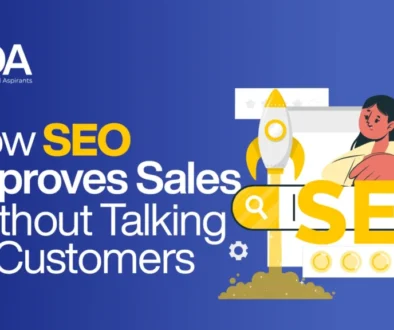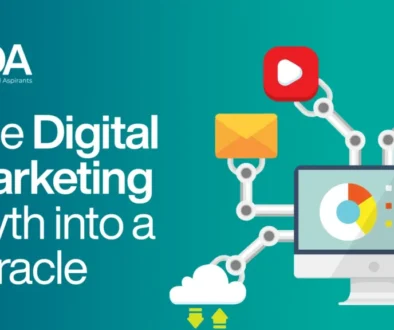Unpacking the Future: An Insider’s Peek into Industry Defining B2B SEO Trends in 2023
In the ever-changing landscape of B2B marketing, understanding the technological shift and evolving user behaviors is key. Here’s a deep dive into the trends set to shape B2B SEO strategies in 2023.
What is B2B SEO
B2B SEO is the use of numerous internet strategies, such as keyword research and page metadata, to connect with a company’s decision-makers. An effective strategy results in visitors to your business’ website, who are actively looking for the products you’re providing
13 Top B2B SEO Trends in the AI Era of Marketing
1 .AI Ready Content
They’re great at understanding lots of different things. They’re so good because of something called ‘NLP’ which helps them understand tricky questions and give smart answers that fit the situation.
NLP includes things like figuring out if a sentence is happy or sad, picking out names of people and places, and even changing words from one language to another. Basically, AI now understands human language really well and that’s making technology even cooler!
All Hail AI!
The world of B2B SEO is getting an AI makeover, and it’s as thrilling as a sci-fi Blockbuster. Essential tools of the trade now include AI-based apps and tools that churn out captivating and search-friendly content, not to mention taming Google’s latest brainchild, the Multitask Unified Model (MUM).
MUM, a poster child for AI’s game-changing abilities, shrugs off the restrictions of exact matches and dives deep into understanding context, abstract ideas, and even the sentiments that underpin search queries.
It’s like having a Swiss Army knife for SEO, working with text, images, and videos to provide exhaustive answers to complex queries.
2 .Personalization Packs a Punch
Gone are the days of generic content. Personalized content, tailor-made to address the unique needs and interests of your audience, is the way forward B2B SEO in 2023.
Let’s face it – it’s not about who shouts the loudest anymore, but who hits the target. Now is the time to pull all stops, and create content that speaks directly to your audience!
3 .Riding the Video Wave
There’s no denying the explosion of video content. More than ever, customers are
consuming video, making it an essential part of any B2B SEO strategy, especially on platforms like YouTube. If a picture is worth a thousand words, imagine what a video can do!
Their power lies not only in their capacity to convey complex concepts succinctly but also in their versatility.
Whether it’s YouTube, blog posts, or social media, visual content finds a home everywhere, amplifying its reach.
But remember, it’s not just about creating; it’s also about optimizing. Pairing visual content with relevant keyword clusters and format-specific keywords enhances your website’s topical authority and search engine visibility.
4 .Voice Search Finds Its Voice
Voice search is no longer a futuristic novelty; it’s the new normal. As the use of smart speakers skyrockets and people value the ease of hands-free searches, voice search is making up an increasing percentage of online queries.
It’s not just about convenience, it’s about aligning with evolving user behaviors.
Consider this: while a user might type “best CRM software 2023,” they’re going to verbalize it
as “Alexa, what’s the best CRM software for small businesses in 2023?” The subtle shift from terse keywords to natural language queries necessitates a change in SEO strategy and content creation.
If your 2023 B2B SEO strategy doesn’t embrace voice search, you’re not only missing a significant chunk of the market but also risking invisibility to potential clients.
If Alexa can’t find you, your audience might not either.
5 .E-E-A-T: Your New Success Diet
Enter E-E-A-T, an acronym for Experience, Expertise, Authority, and Trustworthiness, Google’s litmus test for high-quality content.
This is your secret weapon to rise above the digital fray. Here’s the kicker: 62% of B2B buyers rely on E-E-A-T-enhanced online content to guide their purchase decisions.
So, what makes up this SEO smorgasbord? Experience evaluates your domain knowledge and track record. Expertise underscores your level of skill and proficiency.
Authority is anchored in your online recognition, engagement, and backlinks, and Trustworthiness centers on accuracy and transparency.
6 .Cookies Crumble: A New Challenge
With the farewell to third-party cookies, it’s time to get creative with tracking user behavior and personalizing content.
It might sound daunting, but remember – change is where the opportunity lies. New alternatives like identity solutions, Google’s Privacy Sandbox, first-party data, Google’s Publisher Provided Identifiers (PPIDs), and contextual advertising are your new best friends
7 .Structured Data & Featured Snippets: The Unseen Heroes
Making use of structured data and aiming for featured snippets can be a real game-changer. A little birdie (or should we say, Google?) tells us that websites using structured data enjoy an average of 30% higher click-through rates.
Who wouldn’t want a piece of that pie?
8 .Unique Value through Helpful Content: The Ultimate Strategy
Content that offers unique value and keeps up with evolving trends is what Google and your audience are after. The goal? Identify your audience’s needs and problems and provide helpful solutions.
This isn’t about hitting the target, it’s about solving the puzzle.
9 .Mastering On-Page Optimization
On-page optimization remains a key player in achieving top rankings. Everything from
content to headings, subheadings, internal linking, and meta descriptions needs to be fine-tuned. Think of it as the icing on your SEO cake.
10 .Topical Authority
Topical authority involves becoming an authoritative source on a specific subject, boosting credibility and relevance.
It’s achieved through strategies like semantic SEO, creating a content network, and mapping out subtopics.
Utilizing entity B2B SEO, historical data, and natural language processing further enhances a website’s expertise, making it a go-to destination for users seeking reliable information.
11 .Conduct Conversion Rate Optimization Testing
Conducting Conversion Rate Optimization (CRO) testing involves refining website elements to improve user actions. This benefits B2B SEO, by enhancing user engagement metrics, and business growth, as optimized sites lead to higher conversions, revenue, and customer satisfaction.
Points related to CRO testing.
Use A/B testing to compare several web element iterations.
Improve the usability and navigation of the website to promote user involvement.
Improve forms and call-to-action buttons for higher conversion rates.
Analyse user behaviour and gather information to develop modifications that are well-informed.
Adapt content to user intent to increase engagement.
12 .Search intent is the key
Search intent is the cornerstone of effective digital marketing. By decoding user motivations behind searches, businesses can tailor content and strategies to match user needs, resulting in improved search rankings and user engagement.
This approach optimizes online performance and enhances the overall user experience.
.
Points related to search intent.
Recognise informative, navigational, transactional, and commercial research intents among other types of search intentions.
Choose keywords based on keyword research that represent the user’s individual inquiries and fit their purpose.
Relevance of material: Create material that immediately responds to and fulfils the intent behind user queries.
User Experience: By matching content, landing pages, and CTAs with search intent, create a seamless user experience.
Engagement Measurements For search engines, more engagement, longer stay durations, and lower bounce rates indicate relevant material.
13. The Mobile-First Mantra
2023 B2B SEO hails the era where mobile reigns supreme. To stay ahead, B2B companies need to make sure their websites are responsive and optimized for a seamless mobile experience.
This includes faster server response times, compressed images, and streamlined codes. Top these off with short, descriptive, and keyword-rich titles and meta descriptions, and you’re in for a winning strategy
What is the difference between B2B and B2C SEO?
B2B SEO targets businesses with specialized industry keywords and lead generation tactics, while B2C SEO focuses on broad consumer keywords and direct sales strategies, tailoring content and approach to their respective audiences.
Aspect
B2B SEO
B2C SEO
Target Audience
Businesses, professionals, decision-makers
Individual consumers, shoppers
Keywords & Content
Niche-specific, technical keywords; informative content
Broader consumer-centric keywords; engaging content
Conversion Goals
Lead generation, relationship-building
Direct sales, brand engagement
Purchase Cycle
Longer, complex decision-making process
Relatable, emotional
Content Tone
Professional, industry-focused
Target Audience
Marketing Channels
LinkedIn, industry pubs, email
Social media, influencers, paid advertising
Branding vs. Solutions
Expertise, problem-solving, industry leadership
Product benefits, lifestyle, emotional connections
Briefing
As we wrap up this journey into the future of B2B SEO trends, it’s clear that it’s going to be a year of significant transformations. Success in this evolving landscape is less about just keeping pace with change, and more about mastering and leveraging these imminent shifts.It’s more important than ever to stay updated, with your eye on the horizon – observing and integrating emerging trends. From AI’s increasing dominance to the surge of mobile usage and the diversification of content, there are endless opportunities. The business leaders who stay ahead will be those who embrace these trends and use them to fuel their B2B SEO strategy.
These dynamic changes also mean you will need an intimate understanding of evolving search algorithms. Understanding Google’s Multitask Unified Model (MUM), preparing for a world without third-party cookies, and learning to optimize for voice search are just some of the developments that will be essential in the year ahead.
Remember the heart of any SEO strategy: the users. All these advancements and evolutions mean nothing without a deep and insightful comprehension of your target audience. Whether it’s creating personalized content or offering unique value through helpful and insightful materials, user-centric strategies will continue to be paramount in driving meaningful engagement and conversions. With these evolving trends and new strategies, businesses must remain adaptable. They need to cultivate an ability to pivot and change course when needed, incorporating new tools and technologies while also maintaining a strong grip on their core SEO practices.



